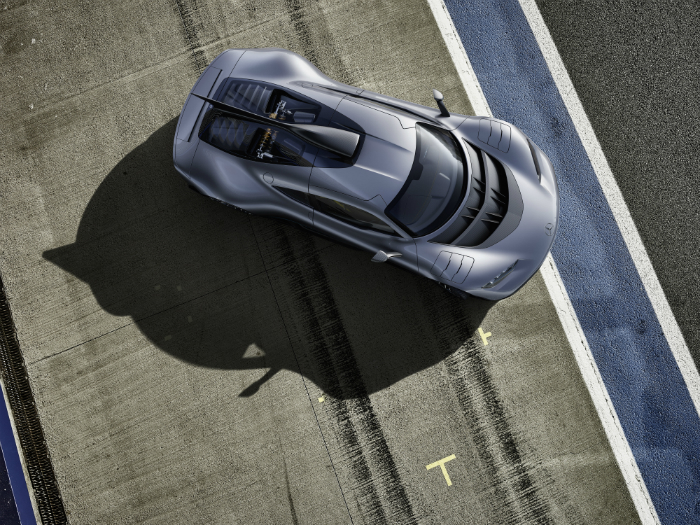Let it be known, first off, that I am a big fan of endurance racing. If motorsport truly is the emotional rollercoaster that it’s often described as, then endurance racing has to be Space Mountain. Toyota’s heartbreak at Le Mans over the past two years is a far greater love story than most modern novels can ever claim to be.
So why is there just one manufacturer left representing what was the LMP1 h category for 2018? The obvious reason is the escalating costs that already limited the WEC’s top category to just three manufacturer participants. And with Audi and now Porsche currently breaking into their rainy day funds to appease global governments and consumers following their emissions scandals, it was inevitable that motorsport programs would see the axe fall first.
But the technology that the category has garnered is truly staggering; half of Toyota’s TS050’s 1,000bhp output is generated from its 8MJ electrical system. And as the electrification of the car is all but inevitable, it is a technology that outwardly has real-world relevance. But as the VW Group refocuses heavily on electrification, it does cast doubt on the relevance of LMP1h in its current guise.
So where does this leave the future of the WEC’s top-flight? As mentioned in last month’s foreword, Toyota has stated that perhaps hybrid isn’t quite ready for Le Mans and it could be argued that the ROI certainly isn’t there, which makes the ACO’s reluctance to confirm whether standardized electrical components will form the 2020 regulations all the more baffling.
Then there’s the argument about brand recognition. Does the WEC offer the same exposure as Formula 1? Can the average car buyer understand the link between the TS050 and, say, the Yaris? In my opinion the answers are ‘no’. And IMSA very much has the WEC licked on the latter point. The 2017 DPi offerings look fantastic and have a variety of visual identities to enable the casual fan to differentiate easily between a Cadillac and a Mazda – a far simpler task than trying to tell whether the car is a Ligier JSP217 or an Oreca 07 out on track. Would a revival of GT1 be the answer? McLaren, Ferrari and Porsche have already built halo road cars that blend hybrid technologies with potent IC engines to deliver power outputs not a million miles away from that of the TS050.
FXXK, 918 or P1 GT1’s? Surely not huge leaps from the Corse Cliente, Weissach Package and MSO specials already pounding round race circuits on exclusive track days for the world’s wealthy. But rather than being squirrelled away in private collections, they’ll have a truly global platform to compete on in front of hundreds of thousands of fans. Granted, teasing images on Instagram have the same effect in terms of exposure to an audience, perhaps arguably an even bigger one, but who doesn’t prefer the sight of a grid of 30+ cars actually being driven in anger, millimeters from each other over the course of a six-hour duel rather than just static images, or entertainment confined to 20-second Snapchats? Call me old-fashioned, but I certainly do.
I’m about to paraphrase, but GT4 in its current guise was described as ‘how GT3 machines were 5 to 10 years ago before they started to cost in excess of US$600,000’, by Opel Motorsport’s Volker Strycek in the last issue of PMW. To me, following on from that statement, a logical, progressive ladder series is already in place ready to be topped off by a revived GT1.
If GT4 became the new GT3 (an extremely healthy GT3 at that, and one that has a sustainable price point, too) it could allow the current GT3 to be rebranded as GT2. The similarities between GT2 in its halcyon days, and even the current LM GTE category, aren’t too far from current GT3 machinery. The added benefit is that it would allow a wealth of existing high-end race cars to continue to compete globally with a more suitable nomenclature, based on road-going vehicles. As a result of most, if not all, engines in the field running restrictors in both GT3 and GT4, the possibilities of increasing performance is already there too. Completing the race weekend’s rolling showroom would be a selection of recognizable, but distinct race variants, of ‘halo’ hypercars from the aforementioned manufacturers.
That then leaves the LMP1 category. Or should it die? The LMP2 and LMP3 sub-categories are built around largely standardized components, offer fantastic racing and are popular with teams, drivers and fans. With a number of manufacturers expressing interest in a simpler LMP1, perhaps a standardized chassis and electrical package could be the answer. The latter of those points has worked in Formula E, so why not in a hybrid format? That way, two legitimate hybrid series could exist in healthy, sustainable sizes, with potentially sensible budgets, too. It’s a nice thought all the same…



